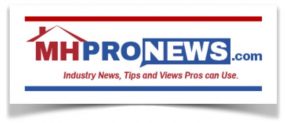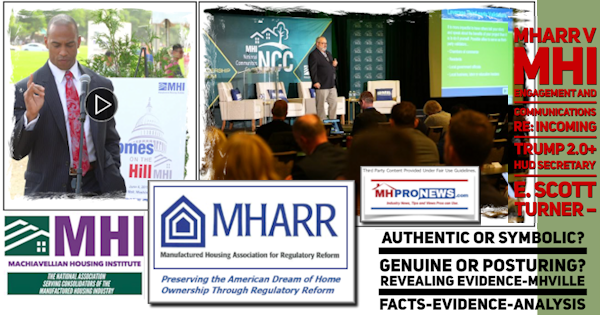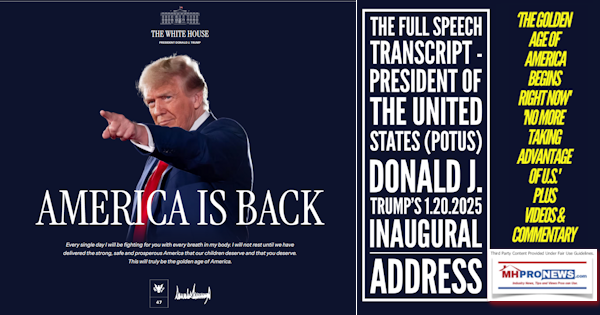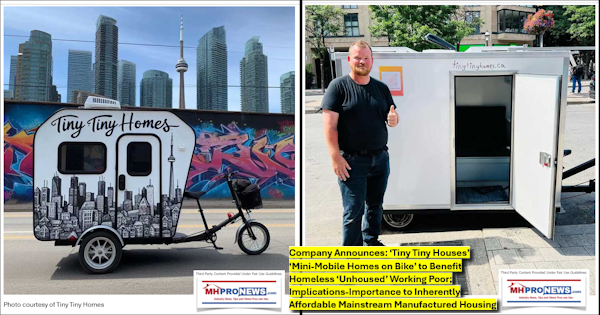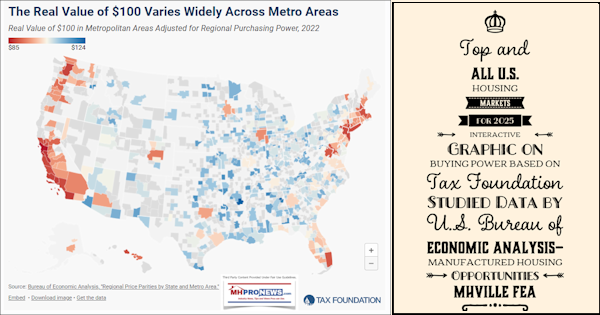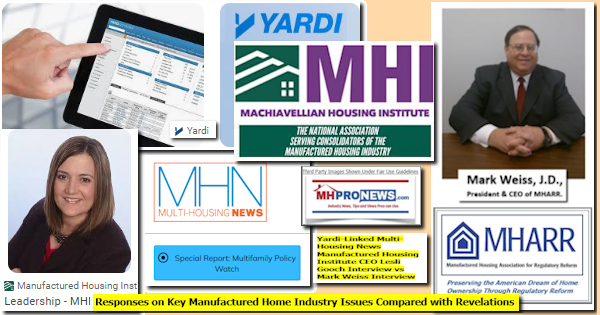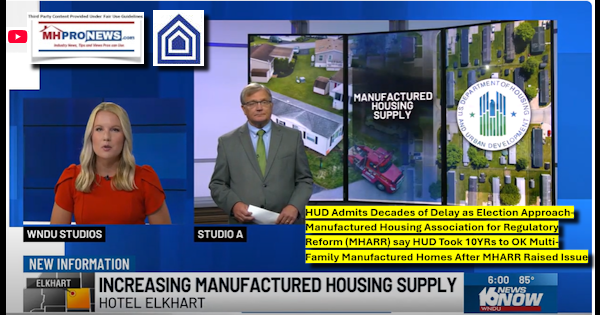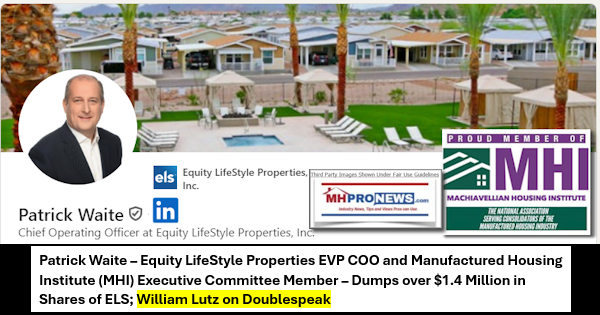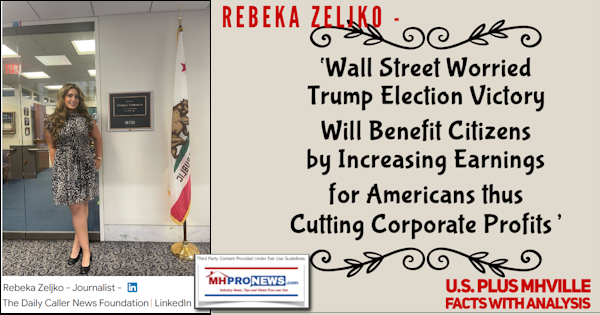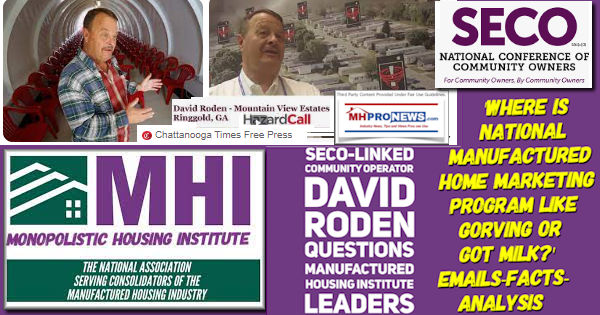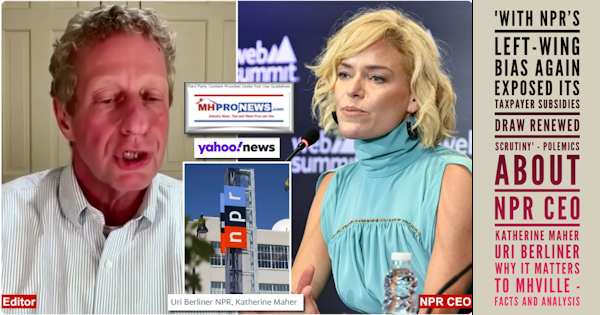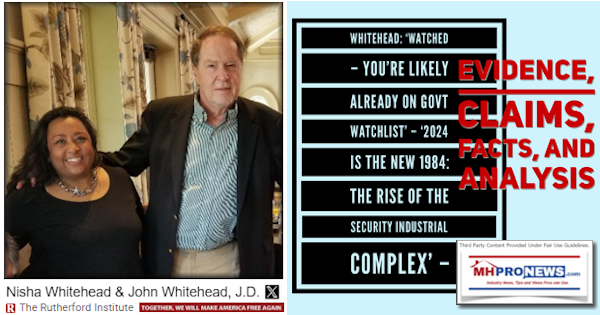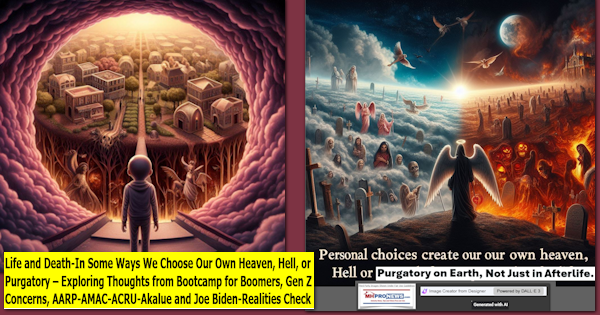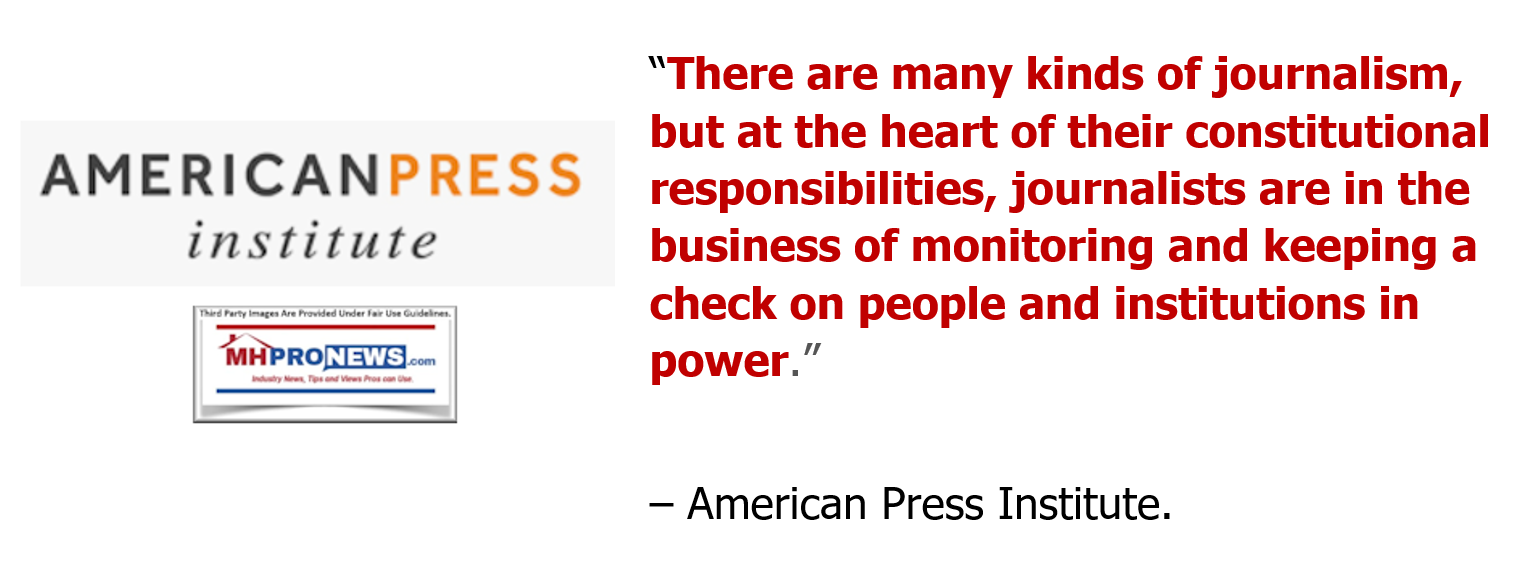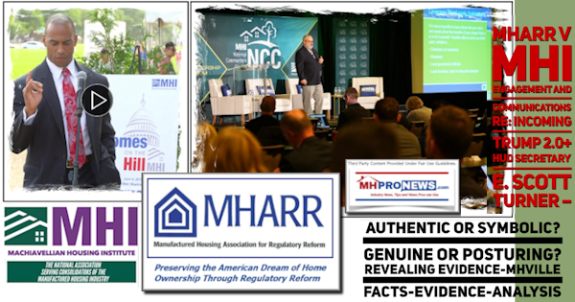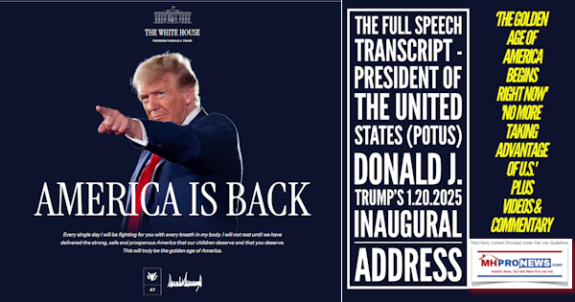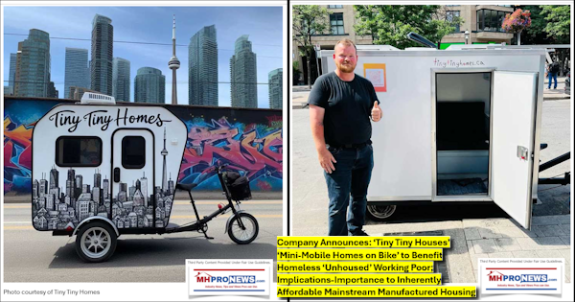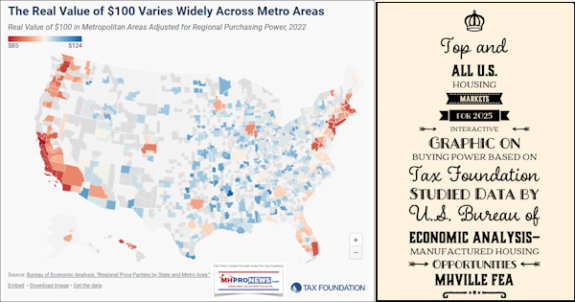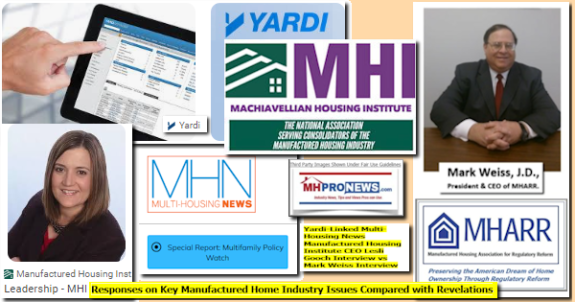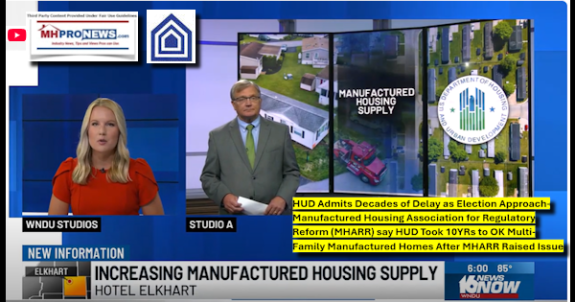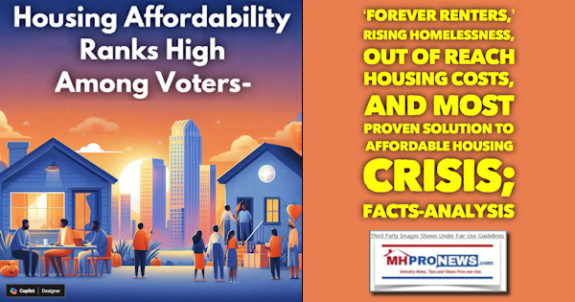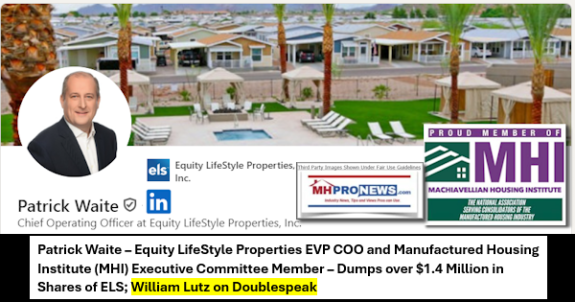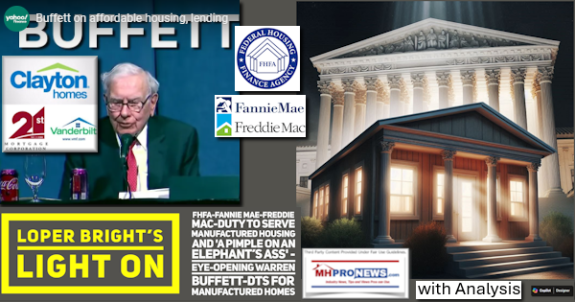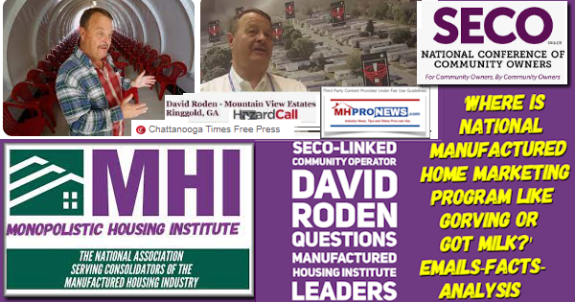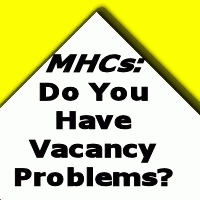
In this news-analysis, there are two press releases provided. The first is from the U.S. Department of Housing and Urban Development (HUD) to MHProNews on the subject of their latest and belated updates to the HUD Code, including their “final rule enables multi-unit single family manufactured homes” in Part I. Part II is a press release on this topic from the Manufactured Housing Association for Regulatory Reform (MHARR) on a related topic of multifamily manufactured homes that they apparently got the ball rolling on. Part III is additional information with more Masthead on MHProNews expert insights.
| HUD No. 24-233 HUD Public Affairs (202) 708-0685 |
FOR RELEASE Wednesday September 11, 2024 |
HUD Updates Regulations to Lower Housing Costs and Build Safe and Affordable Manufactured Homes
HUD marks 50 years of the Manufactured Home Construction and Safety Standards, while announcing the most extensive updates in more than three decades to modernize manufactured home features, increase consumer demand, and expand America’s affordable housing supply.
WASHINGTON – The U.S. Department of Housing and Urban Development (HUD) announced today the most extensive update to the Manufactured Home Construction and Safety Standards in more than three decades, including 90 new or updated standards to increase innovation and production of homes with features that are sought-after by consumers, such as open floor plans and accessibility enhancements, open floor plans, and specifications for attics. Today’s updates will expedite the home production process by cutting red tape and eliminating the need for manufacturers to obtain alternative construction approvals for materials that already meet or exceed HUD standards—helping build more manufactured homes that will lower housing costs for American families. Updating the Manufactured Home Construction and Safety Standards, commonly referred to as the “HUD Code,” supports the Biden-Harris Administration’s goals to expand the domestic supply of safe, affordable and energy efficient manufactured homes. For example, the final rule enables multi-unit single family manufactured homes to be built under the HUD Code for the first time, extending the cost-saving benefits of manufactured housing to denser urban and suburban infill contexts.
“Manufactured homes are an affordable housing option for Americans across the country,” said HUD Acting Secretary Adrianne Todman. “This update of the HUD Code is long overdue and will help increase production while also ensuring modern designs to suit the needs of families.”
HUD’s Assistant Secretary for Housing Julia Gordon these changes at a press conference today in Elkhart, Indiana, the home of the RV and Manufactured Housing Hall of Fame.
HUD makes this change today as the Department marks the 50th anniversary of the passage of the Manufactured Home Construction and Safety Standards Act. Effective as federal law on August 22, 1974, the Act authorized HUD to establish nationally preemptive federal standards for the design and construction of all manufactured homes built in the United States. Today the Manufactured Home Construction and Safety Standards, commonly known as the “HUD Code,” is administered by HUD’s Office of Manufactured Housing Programs and remains the guiding federal standard for ensuring that manufactured housing – the homes of more than 20 million individuals and families – remain safe, durable, and affordable.
HUD recognizes the significant need to increase the supply of safe and quality affordable housing and is committed to fostering increased production and broader consumer acceptance of manufactured housing as a viable, affordable, and comparable alternative to a site-built home. In addition to the final rule, today HUD’s Office of Manufactured Housing Programs issued an industry-wide Alternative Construction Letter that provides the terms and conditions for manufacturers to gain approval of designs and build multi-unit manufactured homes immediately, rather than waiting six months for the standards contained in the final rule to become effective. The updates announced today enact a significant number of recommendations made by the federally mandated Manufactured Housing Consensus Committee.
“The changes to the HUD Code we’ve finalized today will expand the choices among manufactured homes available for the nation’s homebuyers, while increasing the production and availability of innovative manufactured home designs that are safer, modern, and comparable to site-built homes,” said Assistant Secretary for Housing Julia Gordon. “These updates will bring the HUD Code in alignment with today’s construction standards and reduce operational complexity for manufacturers.”
Key additions and updates included in the final rule now allow:
- Up to four unit manufactured homes: Changes to regulatory language allow single family manufactured homes to offer up to four dwelling units while ensuring comprehensive fire safety to occupants by adding benchmarks and guidelines that meet Manufactured Housing Construction and Safety standards.
- Open floor plans, truss designs, and specifications for attics: The updated requirements for exterior door separation and structural design enable open floorplans that maintain fire safety, clarify unclear provisions, and enable optimization of truss design. In addition, the final rule includes more clarity regarding structural design requirements for attics.
- Ridge roof designs: Revised definitions and regulatory language allow certain specified roof ridge designs (peak cap and peak flip roof assemblies) without a requirement for specific on-site inspections by a HUD-approved agency, except for certain exclusions. This type of roof installation is common through the industry and uses technology that is time-tested. This update is beneficial for manufacturers and consumers by incorporating more recent design practices into the regulations and eliminating unnecessary inspections and associated costs.
- Materials that facilitate modern design approaches and improve quality: Updates to reference standards for materials (wood, steel, piping) and products align with other building standards, allow the use of more modern design approaches and installation of alternative materials, and improve the quality and safety of homes for consumers.
- Accessibility improvements: Modifications to standards for accessible showers comply with national disability standards for roll in showers. This eliminates the need for HUD alternative construction approval and reduce cost and burdens for manufacturers and consumers.
- Modern and energy-saving appliances: Updated and newly added standards allow for the use of more modern and energy efficient appliances, including gas-fired tankless water heaters, eliminating the need for HUD alternative construction approvals for use of such appliances.
- Additional process efficiencies that save time and reduce costs: Improved language stipulating prerequisites for the process of obtaining installation licenses increase flexibility for installers; updates to water system piping testing procedures decrease on-site testing time; and utilization of appliance QR codes for manuals and information will reduce paperwork and bookkeeping.
View the full list of updates to HUD’s Manufactured Home Construction and Safety Standards.
Under the Biden-Harris Administration, HUD has prioritized increasing the supply of high-quality manufactured housing. Manufactured housing is a core component of the Administration’s Housing Supply Action Plan, which aims to close the supply gap and provide the affordable homes the country needs. See here for a summary of the actions the Administration has taken to advance manufactured housing across the nation.
Throughout its five decades, the HUD Code has and will continue to evolve to meet the needs of those seeking manufactured housing as a comparable alternative to traditional site-built homes. See here for a historic timeline of changes to the HUD Code.
##
HUD’s mission is to create strong, sustainable, inclusive communities and quality affordable homes for all. …
###
Part II

HUD ADOPTS MHARR-INITIATED FINAL RULE
AUTHORIZING MULTI-DWELLING UNIT MANUFACTURED HOUSING
Washington, D.C., September 12, 2024 – The U.S. Department of Housing and Urban Development (HUD), with uncharacteristic fanfare, has announced the adoption of a final rule – spurred by decisive and persistent MHARR action – to expressly authorize, for the first time, the construction and sale of multi-dwelling unit HUD Code manufactured homes, incorporating up to four units. This action opens an entire new market segment for mainstream HUD Code manufactured housing across the United States.
A September 11, 2024 HUD News Release (copy attached) addresses the substance of a final rule – including the multi-unit provision — scheduled for publication in the Federal Register on September 16, 2024. While other regulatory changes incorporated in this final rule will become effective 180 days after publication, HUD stated in a press briefing for local media that the multi-unit authorization, due to its importance to the industry and consumers, will be subject to a regulatory waiver making that provision effective immediately.
Readers will recall that MHARR took up the multi-unit manufactured housing issue in 2014, when then-HUD program Administrator Pamela Danner issued an edict to the industry asserting that multi-unit manufactured homes were prohibited by the HUD Code standards and particularly section 24 C.F.R. 3280.2, which defines a manufactured home as a “dwelling,” comprising “one or more habitable rooms which are designed to be occupied by one family….”
In a communication dated November 12, 2014, MHARR aggressively objected to this single-family limitation on HUD Code homes, pointing out, among other things, that there was no corresponding provision in the National Manufactured Housing Construction and Standards Act of 1974 – HUD’s authorizing statute – limiting manufactured homes to single-family use (or otherwise supporting HUD’s supposed limitation). With no supporting authority in the governing statute, MHARR maintained that the alleged regulatory prohibition on multi-family manufactured housing use was invalid, illegitimate and void. These and other points raised at that time by MHARR are set forth in written comments filed by MHARR in connection with the present rulemaking process on August 22, 2022 (copy attached, see pp. 8-11).
With no statutory support for its position, HUD was inevitably forced to yield on the multi-unit issue. This resulted in MHARR’s submission of a multi-unit manufactured housing proposal to the Manufactured Housing Consensus Committee (MHCC). Following debate and further development, a multi-unit proposed rule was approved by the MHCC and submitted to HUD for adoption. This led to a proposed rule published by HUD on July 19, 2022. That proposal, however, sought to limit multi-unit manufactured homes to three family units.
In its August 22, 2022 written comments to HUD regarding that proposed rule, MHARR objected to the three family unit limitation, asserting again that there was no statutory basis for any such limitation. Instead, MHARR urged HUD to either establish no cap on family units, or to expand the number of family units to four, in order to allow manufacturers greater flexibility in meeting the needs of an even larger number of consumers.
Based on HUD’s September 11, 2024 News Release, it appears that HUD, in its final rule, has accepted such an increase to four units, even though its purported rationale for establishing any limit at all has not yet been revealed. Needless to say, while MHARR commends HUD for increasing the number of permissible units to four, it nevertheless reserves its right to object to any limitation at all through further proceedings before the MHCC or as otherwise warranted. MHARR will fully analyze the entirety of HUD’s final rule when it is officially published on September 16, 2024, and will take further action (and publish the same) as warranted.
MHARR President and CEO Mark Weiss, attending the current MHCC meeting in Elkhart, Indiana, stated: “This final rule is a tribute to the ingenuity and persistence of MHARR member manufacturers in seeking to open this new market segment. As MHARR has long maintained, mainstream HUD Code manufactured housing is the irreplaceable key to providing affordable homeownership to masses of homebuyers in the United States without the need for costly taxpayer-funded subsidies. The industry, therefore, must continue to press for the advancement of mainstream, affordable manufactured housing and insist that regulators implement existing laws to clear zoning barriers and advance the availability of consumer financing – key bottlenecks that have impaired the growth of the industry — to make this a robust reality for potential homebuyers across the United States.”
The Manufactured Housing Association for Regulatory Reform is a Washington, D.C.- based national trade association representing the views and interests of independent producers of federally-regulated manufactured housing.
— 30 —
Manufactured Housing Association for Regulatory Reform (MHARR)
1331 Pennsylvania Ave N.W., Suite 512
Washington D.C. 20004
Phone: 202/783-4087
Fax: 202/783-4075
Email: MHARRDG@AOL.COM
Website: www.manufacturedhousingassociation.org
Part III Additional Information with More Masthead on MHProNews Analysis and Commentary
1) HUD’s own press release said it. “HUD marks 50 years of the Manufactured Home Construction and Safety Standards, while announcing the most extensive updates in more than three decades to modernize manufactured home features, increase consumer demand, and expand America’s affordable housing supply.” Meaning, while they tried to put lipstick and election season razzle dazzle on the matter, they admit it took decades to update the HUD Code, per their own release.
2) MHARR said they raised this issue a decade ago (2014). Will Manufactured Housing Institute (MHI) linked bloggers and publishers state that fact in their reports? Time will tell, but based on the experiences of the past decade, it is unlikely and would be shocking if MHI would admit that on their own website.
3) MHARR’s proposal occurred during the Obama-Biden (D) administration. It isn’t until the last few weeks before the election in 2024 that HUD rolls this out amid “uncharacteristic fanfare?” See the 21st century patterns of presidential administrations and manufactured housing in the report linked below.
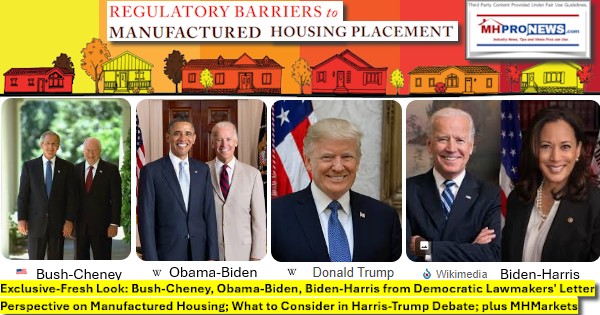
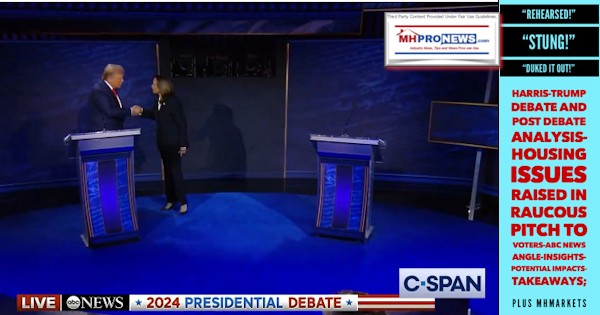
4) Rahm Emanuel was President Barack Obama’s chief of staff for a time. Emanuel infamously said never let a crisis go to waste.

5) Arguably notorious Manufactured Housing Institute (MHI) member Frank Rolfe curiously said the quiet part out loud when he said there is no desire to solve the affordable housing crisis. While we do not endorse Rolfe’s business practices, there is evidence to support his claim. He pointed the finger at MHI, among others in and beyond the government as having no interest in solving the affordable housing crisis.

6) What does MHI do in the face of troubling evidence? They may deploy a head fake that postures efforts without actually delivering for smaller businesses or affordable mainstream manufactured housing seekers. A recent example of that is linked below.
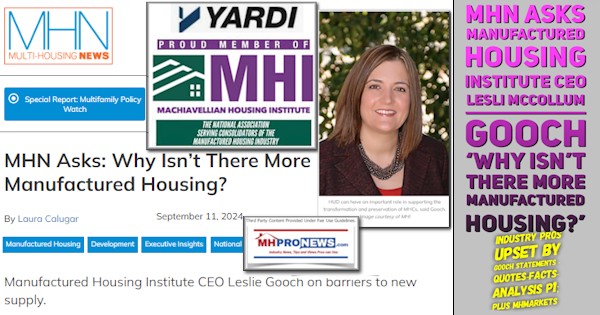
7) MHI blew its own cover once again, as was exposed in the report linked below. MHI has literally aligned itself conventional housing, instead of working with MHARR to advance the interests and production of “all segments” (see linked MHI images) of HUD Code manufactured housing.
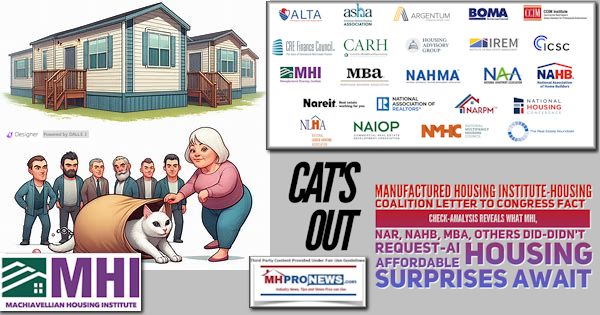
8) Something like 65 to 70 percent of the population believes that the system is rigged. Perhaps there is good reason? Why did HUD take so long to say yes to something that MHARR was obviously correct about when they brought the issue to HUD’s attention a decade ago? Why does it take so long to get public officials to do the jobs that they may get 6 figure salaries and great benefits to do?
See the linked and related reports to learn more. Don’t let special interests get away with it again. ##
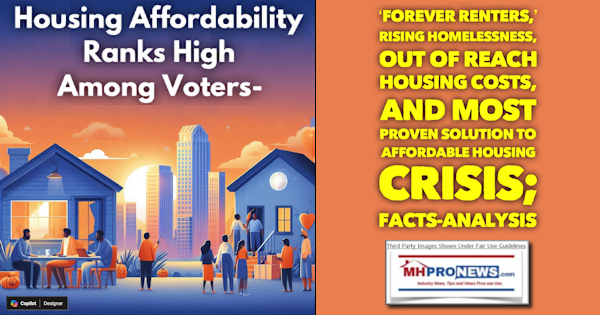
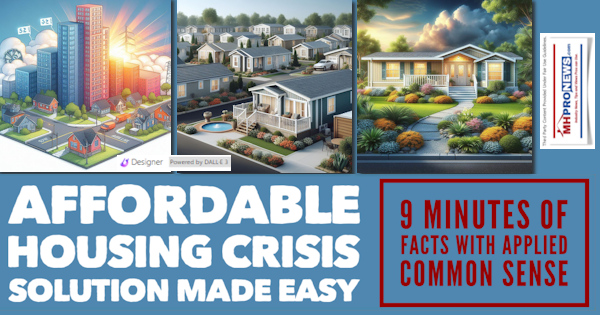
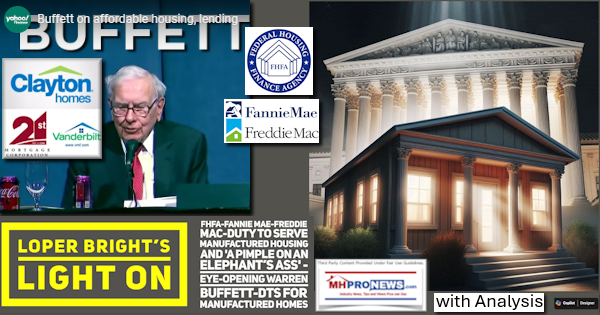

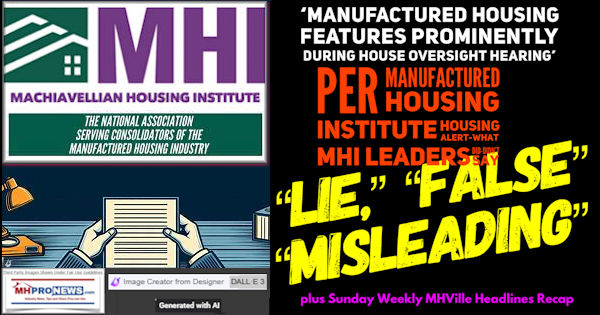
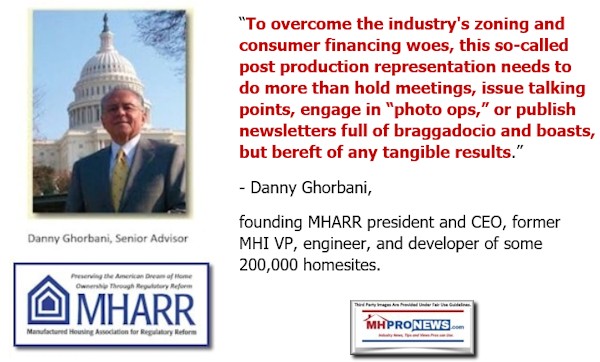

[cp_popup display=”inline” style_id=”139941″ step_id = “1”][/cp_popup]
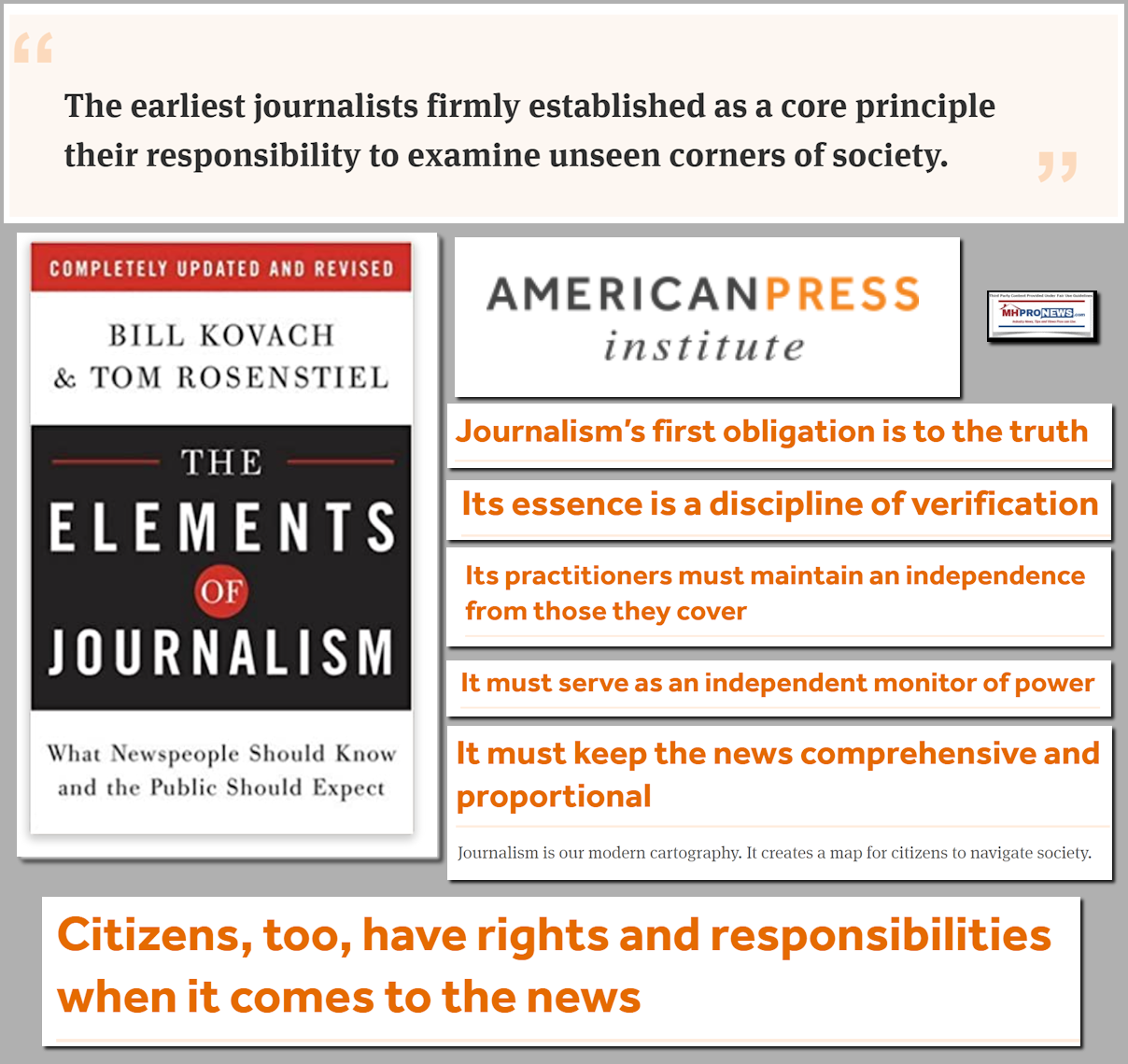
Stay tuned for more of what is ‘behind the curtains’ as well as what is obvious and in your face reporting that are not found anywhere else in MHVille. It is all here, which may explain why this is the runaway largest and most-read source for authentic manufactured home “News through the lens of manufactured homes and factory-built housing” © where “We Provide, You Decide.” © ## (Affordable housing, manufactured homes, reports, fact-checks, analysis, and commentary. Third-party images or content are provided under fair use guidelines for media.) (See Related Reports, further below. Text/image boxes often are hot-linked to other reports that can be access by clicking on them.)

By L.A. “Tony” Kovach – for MHProNews.com.
Tony earned a journalism scholarship and earned numerous awards in history and in manufactured housing.
For example, he earned the prestigious Lottinville Award in history from the University of Oklahoma, where he studied history and business management. He’s a managing member and co-founder of LifeStyle Factory Homes, LLC, the parent company to MHProNews, and MHLivingNews.com.
This article reflects the LLC’s and/or the writer’s position, and may or may not reflect the views of sponsors or supporters.
Connect on LinkedIn: http://www.linkedin.com/in/latonykova
